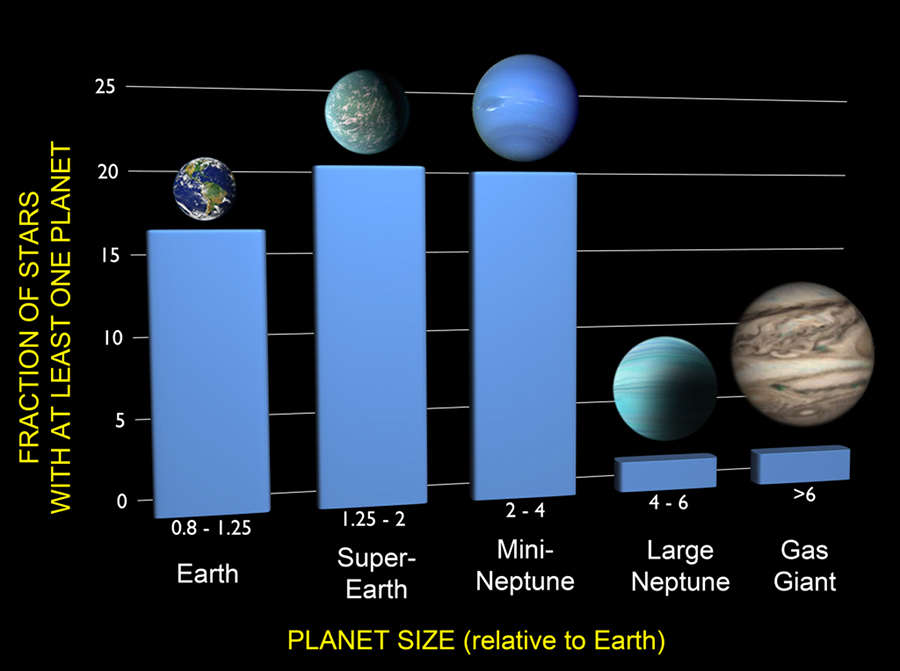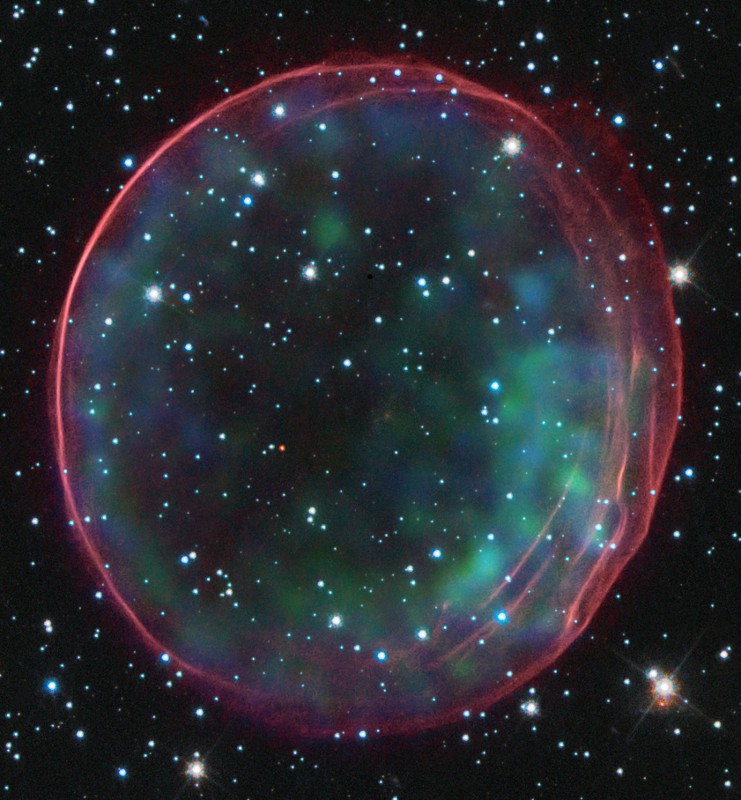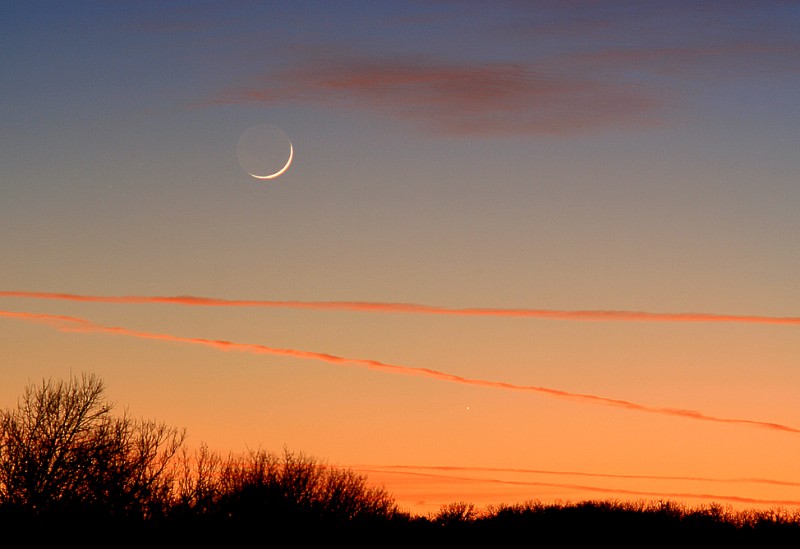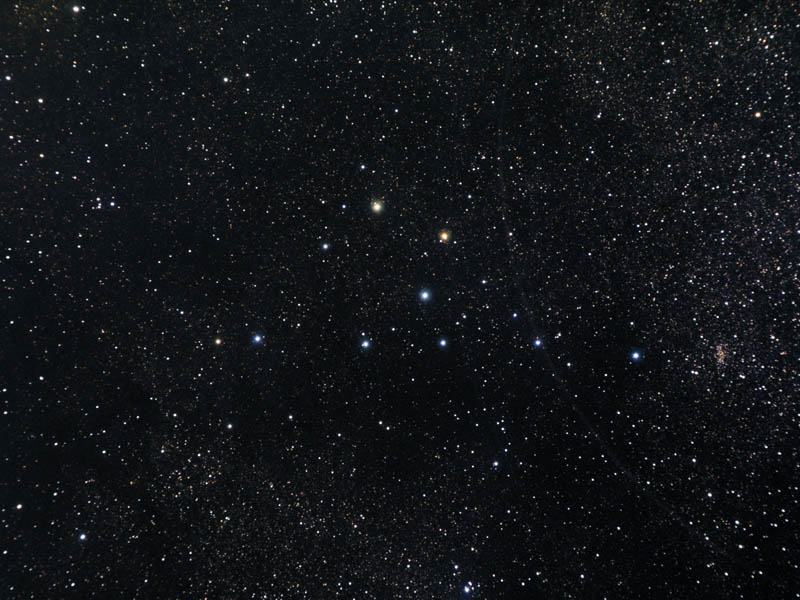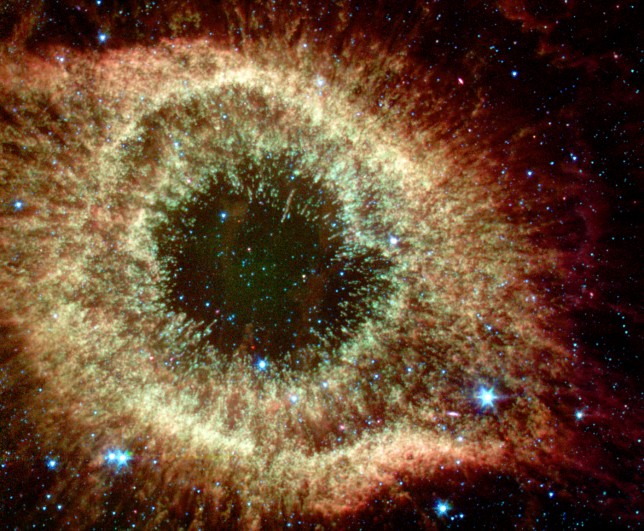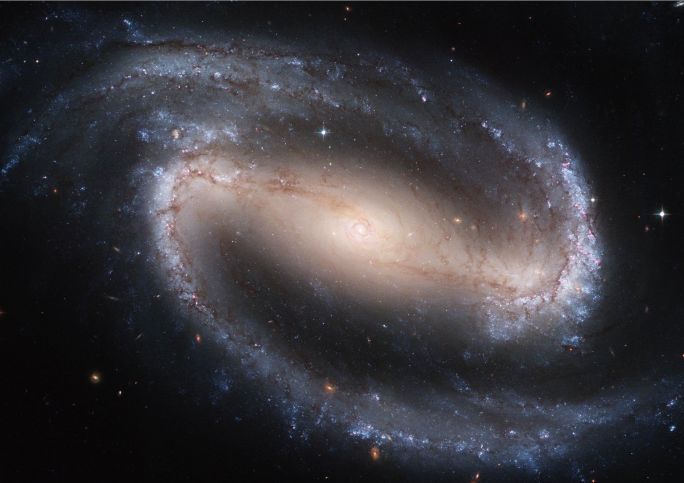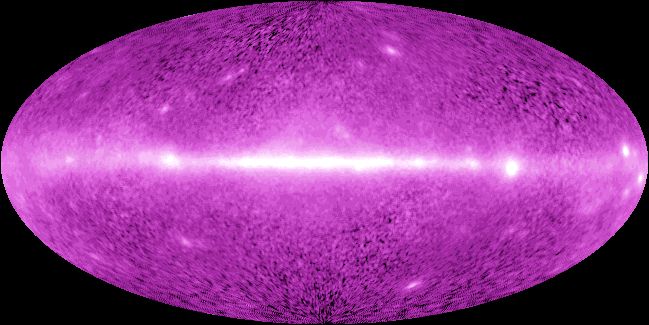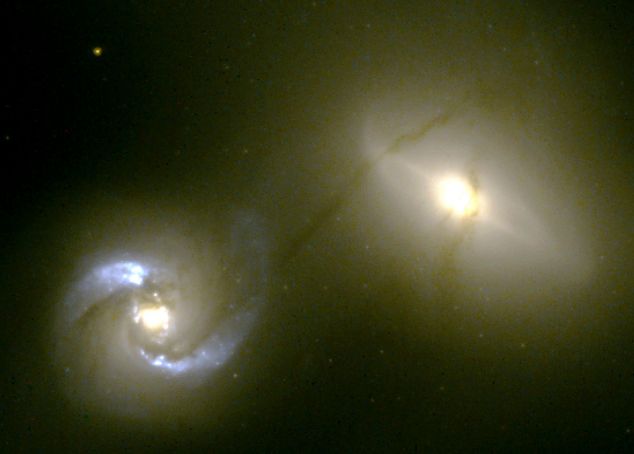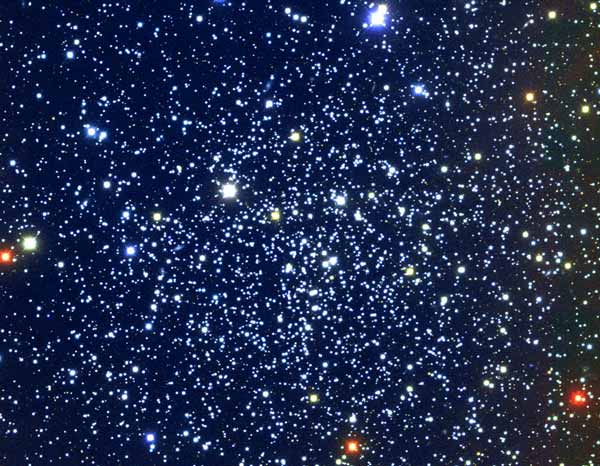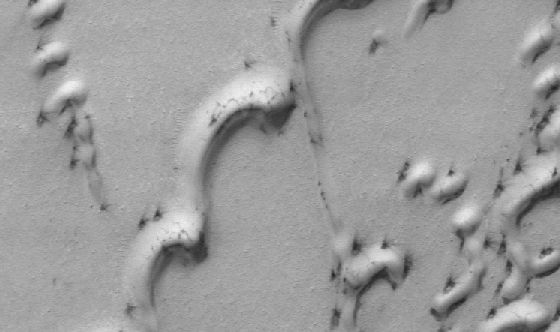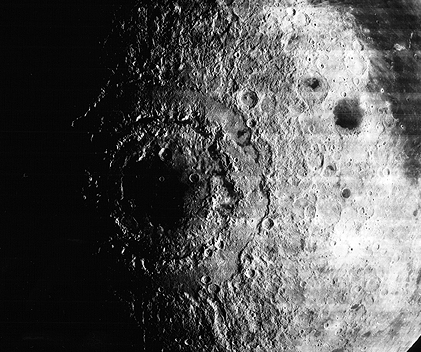| << Previous | Index | Next >> |
2015
Game Credit & BY-NC-ND CC License: Stefano Meschiari (U. Texas at Austin) & the SAVE/Point Team
2014
Flash Animation Credit & Copyright: Cary & Michael Huang
2013 How common are Earth-sized planets? Quite common, according to extrapolations from new data taken by NASA's orbiting Kepler spacecraft. Current computer models are indicating that at least one in ten stars are orbited by an Earth-sized planet, making our Milky Way Galaxy the home to over ten billion Earths. Unfortunately, this estimate applies only to planets effectively inside the orbit of Mercury, making these hot-Earths poor vacation opportunities for humans. This histogram depicts the estimated fraction of stars that have close orbiting planets of various sizes. The number of Sun-like stars with Earth-like planets in Earth-like orbits is surely much less, but even so, Kepler has also just announced the discovery of four more of those.
2012
2011 This broad expanse of glowing gas and dust presents a bird-like visage to astronomers from planet Earth, suggesting its popular moniker - The Seagull Nebula. This portrait of the cosmic bird covers a 1.6 degree wide swath across the plane of the Milky Way, near the direction of Sirius, alpha star of the constellation Canis Major. Of course, the region includes objects with other catalog designations: notably NGC 2327, a compact, dusty emission region with an embedded massive star that forms the bird's head (aka the Parrot Nebula, above center). IC 2177 forms the sweeping arc of the seagull's wings. Dominated by the reddish glow of atomic hydrogen, the complex of gas and dust clouds with bright young stars spans over 100 light-years at an estimated 3,800 light-year distance.
2010 What lights up the Flame Nebula? Fifteen hundred light years away towards the constellation of Orion lies a nebula which, from its glow and dark dust lanes, appears, on the left, like a billowing fire. But fire, the rapid acquisition of oxygen, is not what makes this Flame glow. Rather the bright star Alnitak, the easternmost star in the Belt of Orion visible just above the nebula, shines energetic light into the Flame that knocks electrons away from the great clouds of hydrogen gas that reside there. Much of the glow results when the electrons and ionized hydrogen recombine. The above false-color picture of the Flame Nebula (NGC 2024) was taken in infrared light, where a young star cluster becomes visible. The Flame Nebula is part of the Orion Molecular Cloud Complex, a star-forming region that includes the famous Horsehead Nebula, visible above on the far right.
2009 What's happening over that town? Close inspection shows these strange columns of light occur over bright lights, and so likely involve falling ice crystals reflecting back these lights. The reason why these pillars fan out at the top, however, is currently unknown -- readers of APOD might help figure this out by participating in an online discussion. The above image and several similar images were taken with a standard digital camera in Sigulda, Latvia last month. The air was noted to be quite cold and indeed filled with small ice crystals, just the type known to create several awe-inspiring but well known sky phenomena such as light pillars, sun pillars, sun dogs, and moon halos. The cold and snowy winter occurring this year in parts of Earth's northern hemisphere is giving sky enthusiasts new and typically unexpected opportunities to see several of these unusual optical atmospheric phenomena for themselves.
2008 This colorful view of the western sky at sunset features last Wednesday's slender crescent Moon. Of course, when the Moon is in its crescent phase it can never be far from the Sun in the sky. Also always close to the Sun in Earth's sky is innermost planet Mercury, seen here below and right of center against the bright orange glow along the horizon. Mercury is usually difficult to glimpse because of overwhelming sunlight, but increasingly better views of the small planet after sunset will be possible as it wanders farther east of the Sun in the coming days. On January 14th, NASA's MESSENGER spacecraft will have a good view too, as it makes its first Mercury flyby.
2007 Is this coat hanger a star cluster or an asterism? This cosmic hang-up has been debated over much of last century, as astronomers wondered whether this binocular-visible object is really a physically associated open cluster or a chance projection. Chance star projections are known as asterisms, an example of which is the popular Big Dipper. Recent precise measurements from different vantage points in the Earth's orbit around the Sun have recently uncovered discrepant angular shifts indicating that the Coat Hanger is better described as an asterism. Known more formally as Collinder 399, this bright stellar grouping can be seen spanning more than a full moon toward the direction of the constellation of the Fox (Vulpecula). On the far right of the above image is the open cluster of stars NGC 6802.
2006 Over six hundred light years from Earth, in the constellation Aquarius, a sun-like star is dying. Its last few thousand years have produced the Helix Nebula (NGC 7293), a well studied and nearby example of a Planetary Nebula, typical of this final phase of stellar evolution. Emission in this infrared Spitzer Space Telescope image of the Helix comes mostly from the nebula's molecular hydrogen gas. The gas appears to be clumpy, forming thousands of comet-shaped knots each spanning about twice the size of our solar system. Bluer, more energetic radiation is seen to come from the heads with redder emission from the tails, suggesting that they are more shielded from the central star's winds and intense ultraviolet radiation. The nebula itself is about 2.5 light-years across. The Sun is expected to go through its own Planetary Nebula phase ... in another 5 billion years.
2005 Big, beautiful, barred spiral galaxy NGC 1300 lies some 70 million light-years away on the banks of the constellation Eridanus. This Hubble Space Telescope composite view of the gorgeous island universe was released at this week's meeting of the American Astronomical Society as one of the largest Hubble images ever made of a complete galaxy. NGC 1300 spans over 100,000 light-years and the Hubble image reveals striking details of the galaxy's dominant central bar and majestic spiral arms. In fact, on close inspection the nucleus of this classic barred spiral itself shows a remarkable region of spiral structure about 3,000 light-years across. Unlike other spiral galaxies, including our own Milky Way, NGC 1300 is not presently known to have a massive central black hole.
2004 What could create a huge hole in the clouds? Such a hole, likely hundreds of meters across, was photographed last month from a driveway near Mobile, Alabama, USA. Very unusual to see, hole-punch clouds like this are still the topic of meteorological speculation. A leading hypothesis holds that the hole-punch cloud is caused by falling ice-crystals. The ice-crystals could originate in a higher cloud or be facilitated by a passing airplane exhaust. If the air has just the right temperature and moisture content, the falling crystals will absorb water from the air and grow. For this to happen, the water must be so cold that all it needs is a surface to freeze on. The moisture lost from the air increases the evaporation rate from the cloud water droplets so they dissipate to form the hole. The now heavier ice crystals continue to fall and form the more tenuous wispy cloud-like virga seen inside and just below the hole. Water and ice from the virga evaporates before they reach the ground.
2003 When a meteorite strikes the Moon, the energy of the impact melts some of the splattering rock, a fraction of which might cool into tiny glass beads. Many of these glass beads were present in lunar soil samples returned to Earth by the Apollo missions. Pictured above is one such glass spherule that measures only a quarter of a millimeter across. This spherule is particularly interesting because it has been victim to an even smaller impact. A miniature crater is visible on the upper left, surrounded by a fragmented area caused by the shockwaves of the small impact. By dating many of these impacts, some astronomers estimate that cratering on our Moon increased roughly 500 million years ago and continues even today.
2002 What if you could see gamma rays? If you could, the sky would seem to be filled with a shimmering high-energy glow from the most exotic and mysterious objects in the Universe. In the early 1990s NASA's orbiting Compton Observatory, produced this premier vista of the entire sky in gamma rays, photons with more than 40 million times the energy of visible light. The diffuse gamma-ray glow from the plane of our Milky Way Galaxy runs horizontally through the false-color image. The brightest spots in the galactic plane (right of center) are pulsars, spinning magnetized neutron stars formed in the violent crucibles of stellar explosions. Above and below the plane, quasars, believed to be powered by supermassive black holes, produce gamma-ray beacons at the edges of the universe. The nature of many of the fainter sources remains unknown.
2001 These two galaxies are interacting in a surprising way, connected by a "pipeline" of obscuring material that runs between them over 20,000 light-years of intergalactic space. Silhouetted by starlight, the dark, dusty ribbon appears to stretch from NGC 1410 (the galaxy at the left) and wrap itself around NGC 1409 (at right). A mere 300 million light-years distant in the constellation of Taurus, the pair's recent collision has likely drawn out this relatively thin lane of material which is only about 500 light-years wide. Though the Hubble Space Telescope image dramatically illustrates how galaxies exchange matter when they collide, it also presents challenges to current pictures of galaxy evolution. The titanic collision has triggered star formation in NGC 1410 as evidenced by its blue star forming regions, yet NGC 1409 remains devoid of hot, young blue stars even though observations indicate that material is flowing into it. Bound by gravity, these two galaxies are doomed to future collisions, merging over time into one.
2000 NGC 6791 is one of the oldest and largest open clusters of stars known. But how did it get so dirty? Open star clusters usually contain a few hundred stars each less than a billion years old. Open star cluster NGC 6791, however, contains thousands of stars recently measured to be about 8 billion years old. What's really confusing, though, is that the stars of NGC 6791 are relatively dirty - the minuscule amounts of heavy elements (generically called metals) are high relative to most other star clusters. Older stars are supposed to be metal poor, since metals have only been slowly accumulating in our Milky Way Galaxy. This enigma makes NGC 6791, pictured above, one of the most studied open clusters and a possible example of how stars might evolve in the centers of galaxies.
1999 Wind erosion has been discovered on Mars. Pictures of regions surrounding the north polar cap show sand dunes covered in frost. In places, however, this frost has been eroded to uncover the dark sand underneath. Since this frost can only be as old as the Martian winter is long, this erosion must have taken place within the past Martian year. Once established, it is easy to visualize that much of the appearance of the above region has been sculpted by wind blown dust. Because the Martian atmosphere is so thin, a person standing on Mars would not get blown over by these Martian winds.
1998 The dark dusty Keyhole Nebula gets its name from its unusual shape. Officially designated NGC 3324, the Keyhole Nebula is a smaller region superposed on the larger Eta Carina Nebula. These nebulae were created by the dying star Eta Carina, which is prone to violent outbursts during its final centuries. Noted and discussed as early as 1840 when a spectacular explosion became visible, the Eta Carina system now appears to be undergoing an unusual period of change. An emission nebula that contains much dust, the Keyhole Nebula is roughly 9,000 light years distant. This photogenic nebula can be seen in the south with even a small telescope. The Keyhole Nebula was recently discovered to contain highly structured clouds of molecular gas.
1997 This Stereo image pair of craters on on Mercury was produced using data from NASA's robot explorer Mariner 10 which performed three close flybys of the Sun's closest companion, two in 1974 and one in 1975. However, the spacecraft was not equipped with a Stereo camera! Instead, the Stereo pair was created using two images of the same region each recorded from a slightly different angle. The image on the left was actually taken during the first flyby, the one on the right during the second. A crater within a crater is visible at the upper left, the outer one is about 70 miles in diameter. The embedded craters themselves are within the 230 mile wide Dostoevsky crater - a segment of Dostoevsky's rim runs through the lower half of the image. To get the 3D Stereo effect, your left eye should see only the left image and your right eye only the right one. (Try placing one edge of a piece of paper on the screen between the pictures and touching your nose to the other edge while viewing.)
1996 Looking like a target ring bull's-eye, the Mare Orientale is one of the most striking large scale lunar features. Located on the Moon's extreme western edge, this impact basin is unfortunately difficult to see from an earthbound perspective. It is over 3 billion years old, about 600 miles across and was formed by the impact of an asteroid sized object. The collision caused ripples in the lunar crust resulting in the three concentric circular features visible in this 1967 photograph made by NASA's Lunar Orbiter 4. Molten lava from the Moon's interior flooded the impact site through the fractured crust creating a mare. Dark, smooth regions on the moon are called mare (Latin for sea), because early astronomers thought these areas might be oceans.
| << Previous | Index | Next >> |
